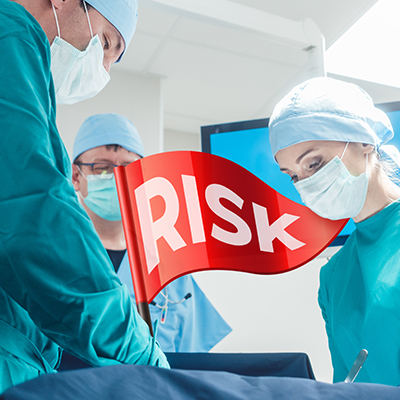Blog
C-Section and Cerebral Palsy

An estimated one in three women gives birth via cesarean section in the United States alone. While this method of birth is certainly common, it doesn’t come without risks. Understanding these risks and the effect a C-section can have on both you and your child is an important part of preparing for your labor and birth of your baby. Here we explore what a C-section is, the possible complications that can arise during and after this procedure, and the risks associated with this method of birth.
What Is a C-Section?
Cesarean delivery, commonly referred to as simply a “C-section,” is a method of delivery in which the baby is delivered through incisions in the abdomen and uterus. C-sections can be either planned ahead of the birth or may be used during labor when it becomes apparent that a vaginal birth is unlikely or dangerous. Women who have previously had C-sections or who have developed complications during pregnancy should be counseled regarding the risks of a vaginal birth after c-section.
There are several reasons why a C-section may be performed. These reasons include:
- The labor isn’t progressing: This is referred to as stalled labor and is one of the most common reasons why women have C-sections. Stalled labor often happens as a result of the cervix not opening up enough despite contractions.
- The baby is in an abnormal posture: If your baby’s position is breech or transverse, a C-section may be necessary to remove the baby in the safest way possible.
- The baby is in distress: Babies can sometimes experience low levels of blood flow during the labor process, which can lead to deprivation of oxygen. In some cases a C-section is the safest way to rescue the baby.
- You have a health concern or condition: Some health conditions, such as a brain or heart condition or an active genital herpes outbreak at the time of birth, make a C-section the safest option when giving birth.
Additionally, some women simply choose to have a C-section to avoid potential complications related to vaginal birth and to enjoy a more convenient and planned way to give birth.
Vacuum-Assisted Delivery
A vacuum-assisted delivery is a procedure that may be attempted before opting for a C-section. A doctor uses a suction cup to gently guide the baby through the birth canal and out of the mother’s vagina. Vacuum-assisted deliveries are most often necessary when the baby is stuck in the birth canal, the baby is experiencing distress, the mom has a heart condition or high blood pressure, or she is too tired to push. This procedure is very rare. The most recent data showed that only 4.4% of all live births involved a vacuum-assisted delivery. However, improperly administered vacuum-assisted deliveries can result in birth injuries and other issues as a result, such as cerebral palsy.
What Are Possible C-Section Complications?
A C-section is considered major surgery, and as with all other major surgeries, there is a potential for complications.
The risks to a baby when performing a C-section include:
- Injury: While very rare, the baby may be injured during a C-section as a result of accidental nicks caused by the surgical instruments used to perform this procedure. Misuse of these tools is also one possible cause of head injuries that can lead to more permanent conditions, such as CP.
- Breathing issues: Babies that are born via C-section are more susceptible to developing transient tachypnea, a breathing condition that causes abnormally fast breathing for a few days after birth.
- Inactivity or sluggishness caused by anesthesia: All C-sections typically involve some form of anesthesia for the mother. The baby can be temporarily affected by this and may experience sluggishness or inactivity after birth.
Additionally, further complications can arise if the C-section is delayed. A delayed C-section can result in heart rate irregularity, fetal distress, and loss of oxygen to the brain that can ultimately lead to brain damage and the development of cerebral palsy in infants. The longer an unborn baby is in distress and experiences oxygen deprivation to the brain, the more likely the child is to suffer from a brain condition like cerebral palsy.
It’s important to remember that C-section complications are relatively rare and that if complications do arise, your doctor will likely treat you and your baby immediately.
Prevention
In most cases, there is little you can do to prevent any complications that may arise during a C-section procedure. However, properly caring for yourself following a C-section can help prevent any late-onset complications from occurring. Great ways to recover after a C-section include using pain relief when necessary, avoiding sex, and resting as much as possible.
C-section complications can have a significant impact on mothers and their babies. If you think it’s possible that your child’s cerebral palsy is the result of a C-section complication or delay that was caused by medical malpractice or negligence, you may have a case and be eligible for compensation.
